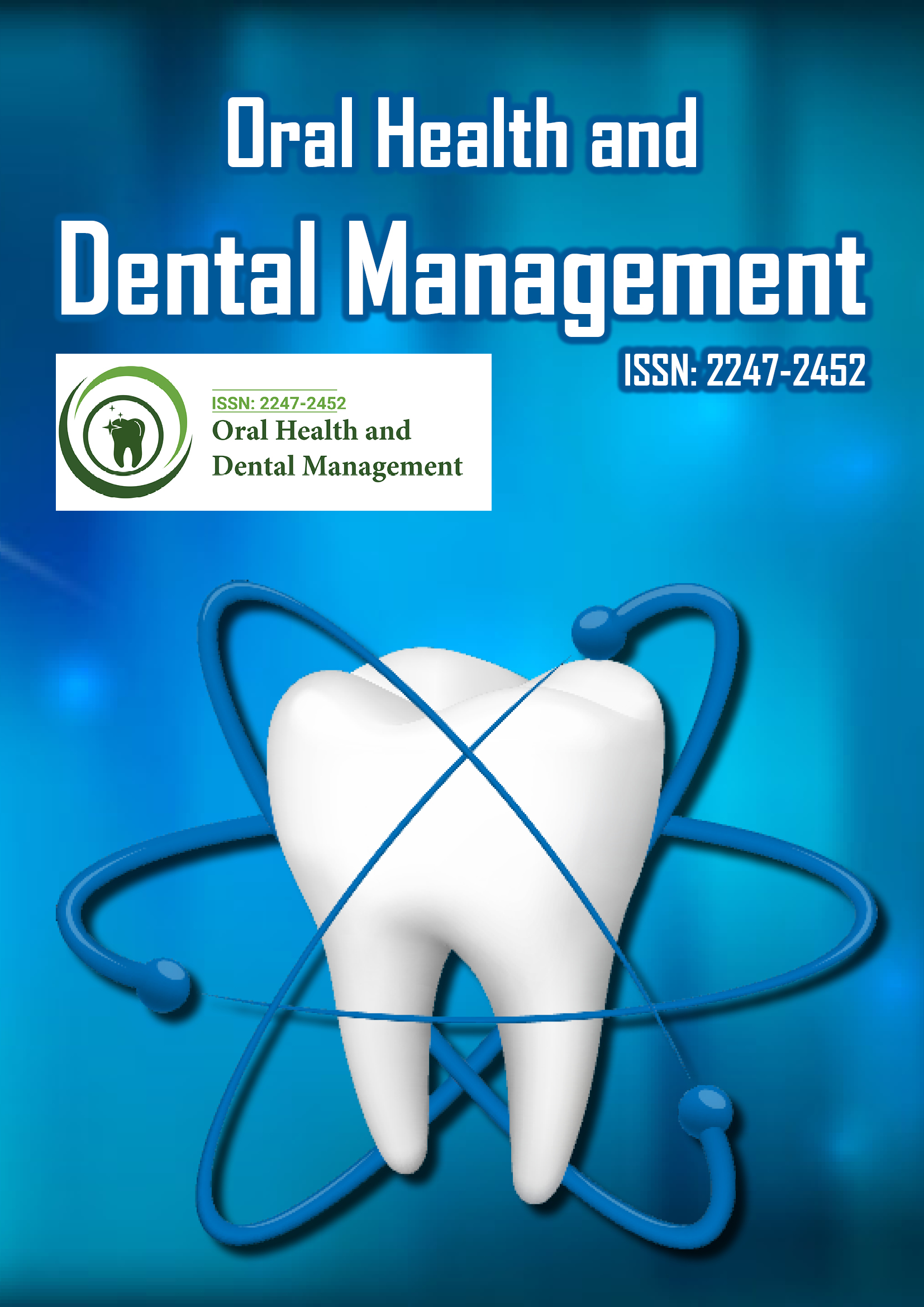Indexed In
- The Global Impact Factor (GIF)
- CiteFactor
- Electronic Journals Library
- RefSeek
- Hamdard University
- EBSCO A-Z
- Virtual Library of Biology (vifabio)
- International committee of medical journals editors (ICMJE)
- Google Scholar
Useful Links
Share This Page
Journal Flyer

Open Access Journals
- Agri and Aquaculture
- Biochemistry
- Bioinformatics & Systems Biology
- Business & Management
- Chemistry
- Clinical Sciences
- Engineering
- Food & Nutrition
- General Science
- Genetics & Molecular Biology
- Immunology & Microbiology
- Medical Sciences
- Neuroscience & Psychology
- Nursing & Health Care
- Pharmaceutical Sciences
Opinion Article - (2024) Volume 23, Issue 4
Advances in Hydroxyapatite Nanoparticles for Enhancing Dental Implant Applications
Ioannis Pappas*Received: 29-Nov-2024, Manuscript No. OHDM-24-28396; Editor assigned: 02-Dec-2024, Pre QC No. OHDM-24-28396 (PQ); Reviewed: 16-Dec-2024, QC No. OHDM-24-28396; Revised: 23-Dec-2024, Manuscript No. OHDM-24-28396 (R); Published: 30-Dec-2024, DOI: 10.35248/2247-2452.24.23.1125
Description
Hydroxyapatite (HA) nanoparticles have garnered significant attention in recent years for their potential in enhancing dental implant applications. As an essential biomaterial in orthopedics, its use in dentistry, particularly in implantology, represents a promising frontier. Hydroxyapatite’s chemical composition closely mirrors that of human bone, making it an ideal candidate for facilitating bone growth and ensuring the long-term stability of dental implants. The advances in HA nanoparticle technology have led to breakthroughs that could revolutionize the field, offering better biocompatibility, improved osseointegration and enhanced mechanical properties for dental implants.
One of the key advancements in HA nanoparticles is their ability to enhance bone-implant integration. Osseointegration, the process by which bone attaches to the implant surface, is important for the success of dental implants. Traditionally, HA was used in its bulk form, but the application of HA in nanoparticle form has opened up new possibilities. The increased surface area of HA nanoparticles allows for better interaction with bone cells, promoting more rapid and efficient bone formation around the implant. This results in improved mechanical bonding between the implant and surrounding bone, enhancing the implant’s overall stability.
Nanotechnology has also contributed to the modification of the surface properties of HA nanoparticles. Surface modifications, such as functionalization with biomolecules or the addition of growth factors, have demonstrated the ability to promote cell attachment, differentiation and proliferation. This further boosts the biological activity of HA nanoparticles, creating an environment conducive to faster osseointegration. These functionalized nanoparticles can be used to create coatings for dental implants, allowing for controlled release of bioactive molecules that promote bone healing and regeneration.
In addition to their biocompatibility, HA nanoparticles possess remarkable mechanical properties that are advantageous for dental implants. Dental implants must endure significant mechanical stresses during everyday functions like chewing and speaking. The size and structure of HA nanoparticles enable them to strengthen the implant material, increasing its resistance to wear and tear. Furthermore, HA nanoparticles can be incorporated into composite materials to improve the toughness and durability of dental implants. These enhanced mechanical properties ensure that implants are not only biologically compatible but also structurally reliable for long-term use.
The customization of HA nanoparticles for specific dental implant applications is another notable advancement. By adjusting the size, shape and surface characteristics of the nanoparticles, researchers can tailor them to meet the specific requirements of individual patients. For example, smaller nanoparticles may be designed for improving cellular interaction, while larger ones might be used to reinforce mechanical strength. This level of customization allows for the development of implants that are better suited to the patient’s unique biological needs, improving overall outcomes.
A particularly exciting aspect of HA nanoparticles in dental implant applications is their potential in the treatment of peri-implantitis, an infection that affects the tissues surrounding dental implants. The antibacterial properties of HA nanoparticles are being explored as a means of preventing and treating infections around implants. By incorporating silver or other antimicrobial agents into HA nanoparticles, researchers have developed implants with dual functionality: TheSy promote bone growth and simultaneously combat bacterial infections. This could significantly reduce the risk of implant failure caused by infection, a major challenge in the field of dental implantology.
In conclusion, the advances in hydroxyapatite nanoparticles have the potential to revolutionize dental implant applications. Their enhanced biocompatibility, mechanical properties and ability to promote osseointegration make them an ideal candidate for improving the success of dental implants. While challenges remain, the ongoing research into the development and optimization of HA nanoparticles offers hope for more effective and personalized dental implant treatments in the future. As these technologies continue to evolve, we can expect to see even greater advancements in the field, with HA nanoparticles playing a central role in the future of dental implantology.
